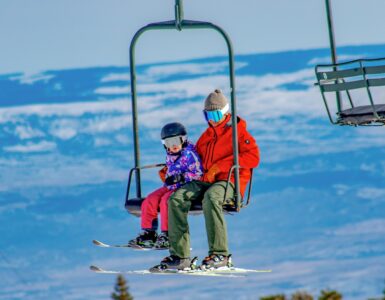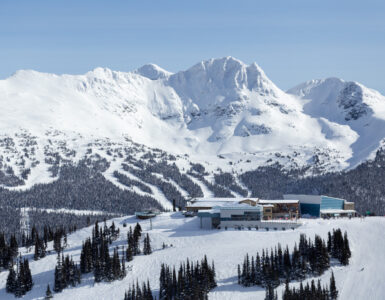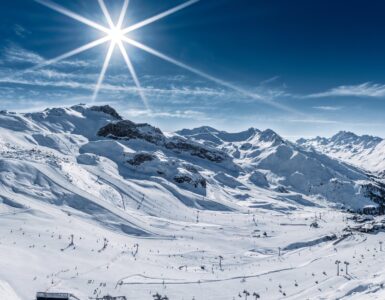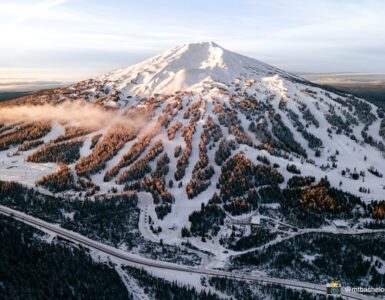Whistler Blackcomb is a ski resort of superlatives. Now, its financial performance and share price are among them.
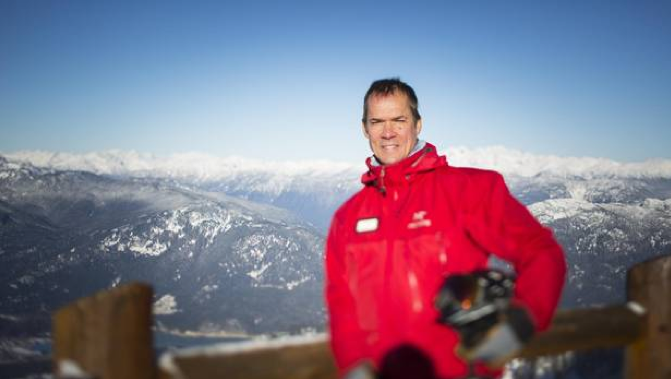
Whistler Blackcomb Holding Inc., North America’s biggest and busiest ski resort, has benefited this season from above-average snowfall and a weak Canadian dollar, which have drawn big-spending visitors from abroad and helped send its stock to a record. The company may boost its ski terrain by a further 25 per cent and attract more summer customers to keep growth humming, its chief executive officer said.
Whistler Blackcomb could increase visits by skiers and snowboarders to about 2.8 million, from 2.0 million now, CEO David Brownlie said in a phone interview. “That’s kind of what we’ve planned,” for a maximum winter-visit capacity. “Summer definitely has a longer way to go. We don’t see a limit at this point.”
Shares in the company touched a high of $27.42 last week, pushing the company’s market value more than $1-billion and making it one of the largest publicly traded ski-hill operators in the world. The stock has gained 40 per cent in the 12 months through Monday, exceeding the performance of global peers including Vail Resorts Inc. and Sweden’s Skistar AB. Whistler Blackcomb was up 0.8 per cent at $25.80 at 9:51 a.m. in Toronto compared with a 0.8 percent decline in the benchmark Standard & Poor’s/TSX Composite Index.
Opened in 1966 as part of a plan to bid for the 1968 Winter Olympics, Whistler now attracts visitors from across Canada and the United States, Europe and, increasingly, Asia. They come to carve turns and relax in the swish surroundings, or hike, mountain-bike, and take in a glacier in the summer. Whistler got a boost from the 2010 Vancouver Winter Olympics, which showcased the soaring Coast Mountains and the resort’s more than 200 ski runs and its peak-to-peak gondola, the highest in the world.
Whistler Blackcomb could expand its ski terrain by about 25 per cent from its more than 8,100 acres 3,300 hectares now, Mr. Brownlie said. “We can still build that business over time with new amenities.”
This year, the combination of the weak Canadian dollar and plenty of snow, after the lowest in 36 years last season, resulted in 23 per cent more visitors in the first quarter ended Dec. 31. Earnings before interest, tax, depreciation and amortization rose 68 per cent to $17.2-million, a record for the company.
The Canadian dollar has dropped about 16 per cent against the U.S. greenback in the past two years and about 10 per cent against the euro and the Japanese yen in the past 12 months. That’s made visits by foreigners cheaper and helped send British Columbia’s growth to the fastest among the country’s provinces.
“Whistler Blackcomb remains a significantly cheaper all-in vacation for our U.S. neighbours, European and Asian visitors,” said Mona Nazir, an analyst at Laurentian Bank in Montreal, who has a “buy” rating on the shares. “The increase in visitors from outside of Canada is also correlated to higher revenue and margins as guests typically spend more per visit than regional guests.”
Five of six analysts covering the company recommend buying the stock. Whistler Blackcomb share performance is edging out Vail Resorts, the Broomfield, Col., company that’s almost five times larger in terms of market value. Manulife Asset Management and CI Investments Inc. are among the largest owners of the stock, according to data compiled by Bloomberg.
Whistler Blackcomb has been investing in restaurants as well as services on the ski hill, such as its ski school. Approval of its expansion plans by the government of British Columbia, which owns the land the resort operates on, would unlock the next wave of expansion for the company, allowing it to increase the number of summer visitors. The company is also open to acquisitions if they are “complementary,” Mr. Brownlie said.
“There are different opportunities that cross our desk,” he said. “If the right one comes along, it’s something we’ll seriously take a look at. Good resorts don’t necessarily come available very often and what is paid is, quite frankly, maybe too high.”
Only three large ski resorts have been built in North America in the past three decades because of the high cost and environmental challenges associated with building in often remote areas. Farther east in British Columbia, developers have been trying to build a ski resort known as Jumbo, the subject of a recent documentary, since 1990 in the face of local opposition concerned about the impact on grizzly bears, diminishing backcountry wilderness and traditional Native rights.
Fickle weather brought on by climate change is among the risks for ski resorts. Farther south, California’s multiyear drought has resulted in curtailed ski seasons for many resorts, including some near Lake Tahoe, after the driest January last year in the state since record keeping began in 1895.
Whistler Blackcomb currently has 2.7 per cent of the North American market of about 75 million skier visits and almost 11 per cent of the Canadian market, according to the company. Its most significant competitors are resorts in Colorado, the Canadian Rockies as well as ski hills in the eastern part of the continent, including Ontario’s Blue Mountain and Quebec’s Mont Tremblant, Mr. Brownlie said.
Whistler Blackcomb pays a quarterly dividend of 24 cents a share, giving it an indicated yield of 3.66 per cent. That compares with 2.57 per cent for Vail Resorts and 3.35 per cent for Stockholm-based Skistar.
While the company’s financial performance has beat competitors, Mr. Brownlie would like to do better on a different metric: getting out to ski more. With this year’s cumulative snowfall on track for an above-average season – it normally reaches more than 11 metres, the chief executive only manages a couple of days of skiing a week. “It’s never enough.”
By Jeremy van Loon
Source: Globe & Mail



